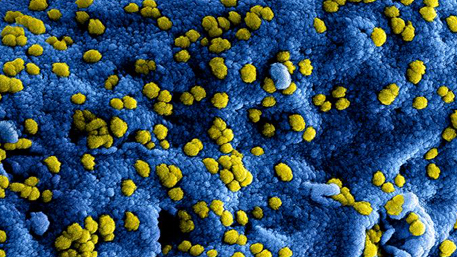
No evidence for increased transmissibility from recurrent mutations in SARS-CoV-2
LV Dorp et al, BIORXIV, May 21, 2020
LV Dorp et al, BIORXIV, May 21, 2020
Upper airway gene expression differentiates COVID-19 from other acute respiratory illnesses and reveals suppression of innate immune responses by SARS-CoV-2
E Mick et al, MEDRXIV, May 21, 2020
E Mick et al, MEDRXIV, May 21, 2020
Early risk assessment for COVID-19 patients from emergency department data using machine learning
FS Heldt et al, MEDRXIV, May 22, 2020
FS Heldt et al, MEDRXIV, May 22, 2020
Interim Analysis of Risk Factors for Severe Outcomes among a Cohort of Hospitalized Adults Identified through the U.S. Coronavirus Disease 2019 (COVID-19)-Associated Hospitalization Surveillance Network (COVID-NET)
L Kim et al, MEDRXIV, May 22, 2020
L Kim et al, MEDRXIV, May 22, 2020
Independent factors associated with in-hospital mortality included ages 50-64, 65-74, 75-84 and 85+ years versus 18-39 years (aRR 3.11, 5.77, 7.67 and 10.98); male sex (aRR 1.30); immunosuppression (aRR 1.39); renal disease (aRR 1.33); chronic lung disease (aRR 1.31); cardiovascular disease (aRR 1.28); neurologic disorders (aRR 1.25); & diabetes (aRR 1.19).
Translating Science on COVID-19 to Improve Clinical Care and Support the Public Health Response
C del Rio et al, JAMA, May 22, 2020
C del Rio et al, JAMA, May 22, 2020
This Viewpoint reviews progress to date on drug and vaccine development for COVID-19, antibody testing for demonstration of immunity and seroprevalence, and the continuing need for testing capacity to more precisely manage the public’s health as mitigation restrictions loosen during summer 2020.
Stanford virtual conference will focus on ways AI can aid COVID-19 recovery
S Lynch, Stanford University, May 20, 2020
S Lynch, Stanford University, May 20, 2020





















.jpg)












No hay comentarios:
Publicar un comentario